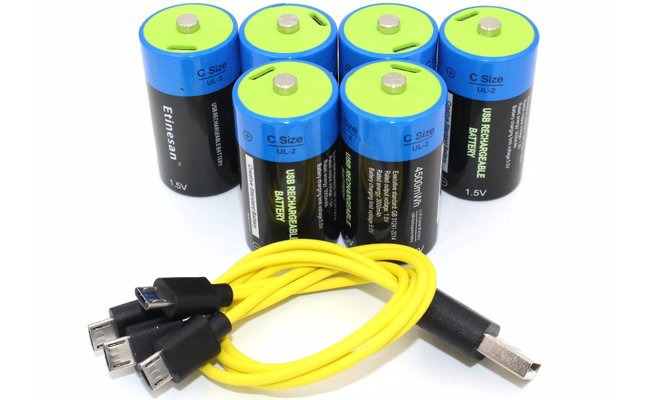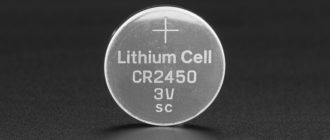USB batteries are modern power sources, the charge of which can be restored using an electric device equipped with an appropriate port. Such products are ordinary batteries, but you do not need to purchase special chargers to charge them. The advantages and features of USB batteries will be described in detail below.
Content
Advantages and features of USB batteries
The absence of the need to purchase additional chargers required the developers of such products to install a connector on the battery case.
The ability to connect can be realized through a wired connection or by installing a connector directly on the battery case.
Connectable via wire
Due to the presence of a wire, you can simultaneously connect several batteries to nearby USB outputs of a computer or laptop.
The following models are available for wiring the battery to the port:
- Mini USB.
- Micro USB
- USB Type-C
The presence of wire charging allows you to simplify the design of the device, which positively affects the total cost of the battery.
Plug-in like a flash drive
In addition to wired batteries, you can also purchase devices with a built-in USB connector. By the principle of connecting to the port, such products resemble a flash drive.
As a rule, the contact part of such batteries is located under the positive pole, which can be easily pushed to the side with a little effort. After charging, the movable part of the battery is replaced.
The advantage of this design is the lack of additional elements that can easily become unusable as a result of careless handling or be lost.
The main drawback of products connected “like a USB flash drive” is the difficulty of connecting additional devices near the battery, but this problem can be easily solved by purchasing a port multiplier.
Types and sizes
Despite the fact that a similar technology appeared recently, products can be purchased in the form of most well-known standard sizes of batteries.
Most often on the shelves you can find the following models of batteries charged from the USB port:
- AAA.
- AA
- FROM.
- D.
- 18650
- Crown.
USB batteries are manufactured using nickel metal hydride, nickel cadmium and lithium technologies. Using modern production methods allows reloading products up to 500 times without loss of capacity.
Characteristics and manufacturing techniques
USB batteries can vary significantly in some ways. Most often, such products have differences in voltage and manufacturing technology.
Ni-Mh 1.2V
NiMH batteries have minimal memory effect, large capacity and resistance to heavy loads. The disadvantages of such elements can be considered too large self-discharge.
Even in a completely de-energized device, such batteries run out rather quickly, which should be considered when infrequently used devices. Almost all USB batteries manufactured by nickel-metal hydride technology have a voltage of 1.2 volts on their contacts.
Ni-Cd 1.2V
Nickel Cadmium Batteries tougher than nickel metal hydride products. With equal load, such elements do not emit a large amount of heat, so the reliability of the products is much higher.
In addition, the cost of nickel-cadmium products is not as high as that of Ni-Mh and lithium cells. The disadvantage of this type of USB battery is its relatively small capacity.Typically, this technology produces 1.2 Volt cylindrical batteries.
Li-Ion 1.5V, 3.6V, 9V
Li-ion USB batteries are available with 1.5V, 3.6V, 9V pins. Basically, finger batteries and replacement products are made using this technology. 18650 battery and batteries "Crown».
Lithium batteries have a small leakage of electricity at rest, as well as a significant number of charge / discharge cycles.
How to charge a USB battery
Charging the rechargeable USB battery is carried out in fully automatic mode, so the user only needs to connect the product to the port.
As soon as the current starts to flow, the red LED lights up, after the operation is completed, the blue element lights up, indicating that the battery is fully charged.
What to look for when choosing
USB batteries are quite expensive products, so you should not give in to temptation and be carried out on advertising "sales".
On such promotions, devices that do not differ in high quality are often sold and after several tens of charge / discharge cycles, the battery capacity will sharply decrease.









